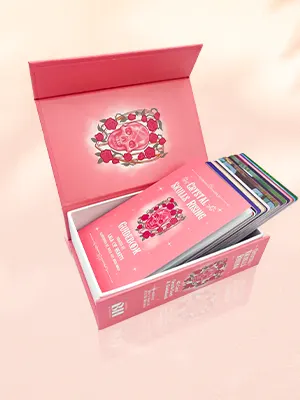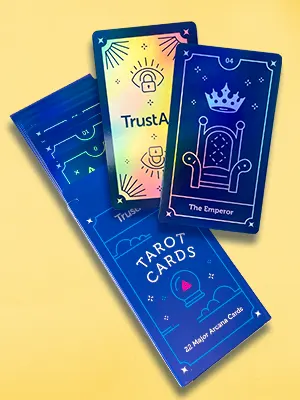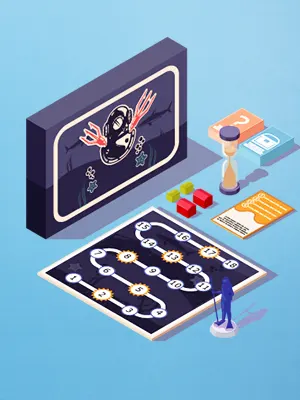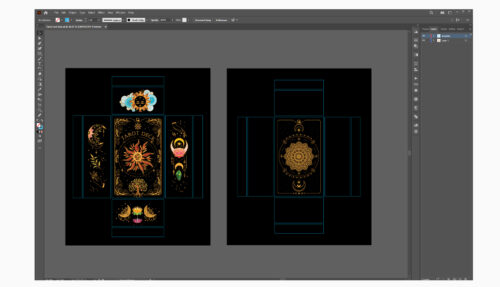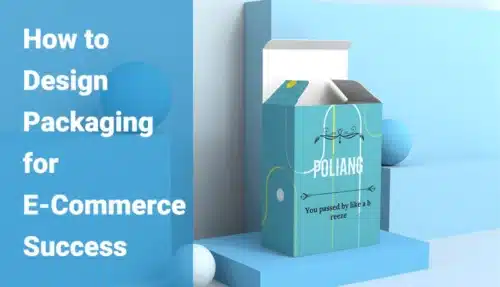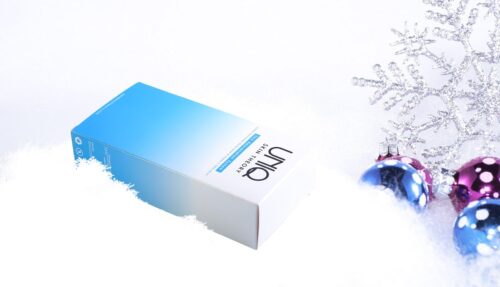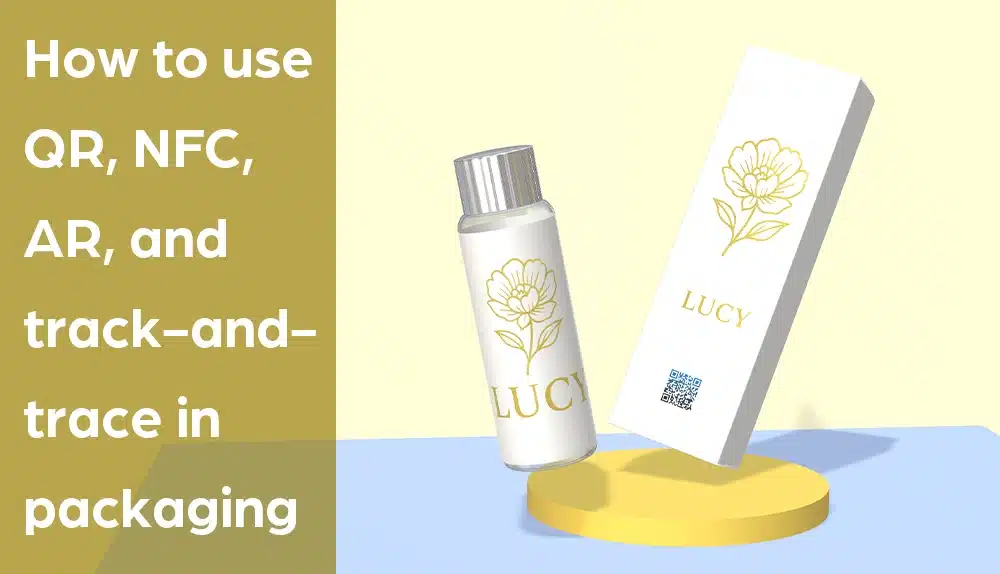
If you manage a cosmetics brand, a toy company, or a 3Cs business, your packaging already does more than protect a product. It sells it; it educates the buyer, and today, it can even link to a digital experience, expand the repeat sales funnel, support smart supply chain management, and more.
Smart packaging has radically changed what a simple folding carton can do. You’ve probably seen examples of this everywhere. Maybe a lipstick carton that opens a video when the buyer scans an AR or QR code, or a toy box that links to a digital game or app, or an electronics box that verifies the authenticity of the product with a single tap. Each of those boxes connects the physical and digital worlds in one step. And if you’re not using this tech yet, you are missing a very important trick or two.
At QinPrinting, we help brands take full advantage of this technology every day. But before we get into the details, here’s a quick summary of what we’re going to cover in this post.
Smart Packaging for Folding Cartons: At a Glance
| What it is | Smart packaging connects a printed folding carton to digital data using QR codes, NFC tags, AR markers, or track-and-trace systems. |
|---|---|
| Main benefits | Builds buyer trust, adds value, supports marketing campaigns, prevents counterfeiting, and improves supply-chain control. |
| Best for | Cosmetics, toy, and 3Cs brands that want to link packaging with digital engagement or product verification. |
| Popular features |
QR codes: easy, low-cost web links NFC tags: touch verification and secure data AR markers: interactive animations or product previews Track-and-trace: serialized monitoring for logistics and recalls |
| Design guidelines | Leave 5 mm clear zones around scannable marks; maintain strong contrast; avoid folds and glue near codes; test coatings and finishes; plan NFC tag placement early. |
| Privacy considerations | Add a short privacy notice to linked pages; follow regional data laws such as GDPR (EU) and CCPA (California). |
| Cost range |
QR and AR features: minimal cost NFC and track-and-trace: add modestly to per-unit cost depending on quantity and material. |
| Sustainability | QR and AR use only ink; NFC tags are thin and removable; solvent-free glues and water-based coatings keep cartons recyclable. |
| How to start | Choose one SKU and one feature; set clear goals; send dieline and artwork to QinPrinting; review printed samples; scale after testing. |
| Why QinPrinting | We print and embed smart features in folding cartons with precise offset quality. Our team handles layout, testing, and data coordination for smooth global delivery. |
What smart packaging means for you
Smart packaging turns an otherwise straightforward printed box into an interactive resource. You can use it to link your product to a range of enhancements and services such as digital content, customer service, or supply-chain tracking.
Okay, sounds good, right? But exactly how do you do that? Well, you can build that connection with a range of surprisingly simple tools that can be integrated right into your folding cartons. For example:
- QR codes that send buyers to videos, landing pages, or promotions.
- NFC tags that transfer data through touch.
- AR markers that provide 3D or virtual experiences on a phone screen.
- Track-and-trace codes that record each unit’s journey through the supply chain.
Each of these options can fit within your folding carton design. And here at QinPrinting we can print or embed them during production so you can test, measure, and expand as your campaign grows. But if you’re not sure what these technologies are, read on. We’ll explain everything.
How smart packaging works
In cosmetics, smart features can help you, among other possibilities, to build trust. You can add, for example, a QR code that plays a quick demo of a skincare routine or an NFC tag to your box that proves a bottle is genuine. Several of our clients now use this method to protect high-end perfumes and creams from counterfeits or provide endorsements and user tips.
In the toy sector, you can use smart packaging to make unboxing part of the fun. One of our clients prints QR codes on collectible action figure boxes that unlock character animations and quizzes. Kids love the surprise and interactivity, and parents see real brand effort behind the product and the added value they’re getting for their bucks.
In 3Cs, smart cartons are frequently used to improve customer support services. A code printed on the inside flap, an insert, or right there on the outside of the carton can open an installation guide, warranty form, customer user forum, or even a live chat. This small addition has proven in numerous cases to cut product returns and help your team solve any issues faster.
All three sectors benefit from the same core product: a strong, printed folding carton. The smart feature adds more value without changing your structure or production flow. The return on investment with these solutions can be phenomenal and it’s one of the core factors that we’ve seen driving uptake in recent years. So, we promised we’d explain the details of the tech. Let’s do that next.
QR Codes: The simple and flexible option
QR codes remain the most common smart packaging tool. At QinPrinting, we can print them directly onto your cartons in one pass. You can choose between static codes, which always lead to one page, and dynamic codes, which you can update anytime through a link manager.
A cosmetics client once printed dynamic QR codes on trial-size boxes. During the launch, the code led to a welcome page. Later, they switched to a discount page. Without any reprinting, the client turned a sample run into a long-term sales tool. Smart, right?
NFC tags for secure and premium brands
NFC stands for “Near Field Communication”. These thin chips hide between paper layers and work when a buyer taps the surface with a phone.
NFC is ideal for luxury cosmetics and 3Cs products. For example, a fragrance carton can send a ‘verified’ message at the point of sale. A smartwatch box can start the setup process before the buyer opens it. There are dozens of other potential applications of this tech.
At QinPrinting, manage NFC placement during structural design. We keep tags away from folds and glue zones, then test the box during the first sample run. But please note that you must supply the tags.
AR markers can add story and emotion
Augmented Reality (AR) can make your packaging super interactive and emotionally engaging. How? Well, the printed image becomes the trigger for digital animation or 3D modeling!
A toy maker we work with added an AR marker to a puzzle box. When scanned, the character (a cartoon dinosaur) appeared on-screen and moved and spoke, welcoming the viewer to the product. Consumers love these things and sales for that product line increased noticeably.
AR works for cosmetics, too. One skincare brand used it to show a rotating 3D view of the product jar with clear text overlays. The AR image was on the outside of the box so that potential customers could check out the insides without breaking the seal. You can image the impact that had on sales.
Our expert pre-press team checks all AR artwork to maintain contrast and sharp edges. This helps the marker scan smoothly and keeps the digital effect clean. Your designer should be familiar with all of this, but if there’s anything about which you’re not sure, just get in touch and we’ll be happy to help.
Track-and-trace
Track-and-trace codes give each folding carton a unique identity. The code links to a secure database that records where each box travels. This tool helps control gray-market sales and protects both your brand and your customers. It also makes recalls and stock checks more accurate.
Design and printing tips for smart boxes
If you’re planning your first smart packaging project, here are a few guidelines that will make production smoother:
1. Leave a 5 mm clear space around every scannable mark.
2. Use strong contrast—dark ink on a light background works best.
3. Avoid folds, glue, or perforations near QR codes or AR markers.
4. Test coatings first. Gloss and matte can affect scanner response.
5. For NFC, confirm tag size and pocket placement early in design.
At QinPrinting, our structural and pre-press specialists review each dieline before the first print. We run test proofs to make sure all interactive areas work as intended. But if you take the trouble to get it right at the design stage, it makes the production process faster and more efficient.
Data and privacy
Now, here’s a thing not to gloss over. Every time a buyer scans or taps your box, a digital connection happens. And that connection can include personal data. So, to protect both your customers and your business, your content must follow the privacy laws in your market. And if you’re working on a global or international scale, you may need to comply with different laws depending on the territories to which you export your goods.
We always advise clients to place a short privacy statement on their linked page. This builds trust and avoids legal issues in regions such as the EU or California. We also recommend that you take qualified legal advice before you go ahead with any design or smart tech inserts. That way, everyone’s covered and your mind can be at ease.
Cost and return
Adding smart features will change your unit price slightly, but the gain in value is almost always far higher. QR codes add almost no extra cost. AR adds a small pre-press step. NFC and track-and-trace raise cost modestly per unit over and above the production of the original inserts. But many of our clients find that the return through stronger buyer engagement and better data quickly offsets the initial investment. In the end, it’s all about ROI. And smart packaging is one of the best investments you’ll make.
Sustainability
Sustainability is a huge consideration these days, and rightly so. Smart packaging and sustainability can work together. QR and AR use only ink; and we use biodegradable, non-polluting soya inks. NFC tags contain a thin metal layer that recycling systems can easily remove during processing.
How to get started with smart packaging
We think you should be interested, if not convinced, by the value that smart packaging offers your brand, business, and bottom line. So now let’s look at how to actually do it. It’s easier than it looks. Here’s a simple plan that many of our clients follow:
1. Choose one pilot SKU (stock keeping unit).
2. Pick one smart feature—QR or NFC works well to start.
3. Define a goal: scans, data capture, authentication, or product enhancement.
4. Send us your dieline and artwork.
5. We print test samples for review before mass production.
Once your pilot performs well, scaling to other products is really straightforward. Provide us with the designs 9and NFC inserts if you’re heading that route) and we’ll take care of the rest. And as always, any questions, just ask. And talking of questions…
Frequently Asked Questions
What is smart packaging for folding cartons?
Smart packaging adds digital features such as QR codes, NFC tags, AR markers, or track-and-trace codes to a paper carton. These tools connect the box to web pages, apps, or data systems. The result is packaging that informs, protects, and interacts with the buyer.
Why should I add smart features to my packaging?
Smart features help you stand out. They let you share videos, collect feedback, verify authenticity, or track your products through the supply chain. Many brands also use them to reduce counterfeits and improve customer support.
Which industries benefit most from smart folding cartons?
Smart packaging works best for cosmetics, toys, and 3Cs products. These sectors value brand protection, digital engagement, and clear product guidance.
How much does smart packaging cost?
QR and AR printing add almost no cost. NFC and track-and-trace systems raise unit prices slightly, depending on run size and materials. The gain in marketing data and customer trust usually outweighs that small increase.
Can smart folding cartons still be recycled?
Yes. QR codes and AR markers are printed with regular inks. NFC tags are thin and easily removed during recycling. At QinPrinting, we use solvent-free glues and water-based coatings to keep all smart cartons recyclable.
What data or privacy rules apply?
If your code or tag connects to a web page that collects data, you must comply with regional laws such as GDPR in the European Union and CCPA in California. We always recommend adding a short privacy notice on the linked page.
How can I test a smart packaging idea before a full rollout?
Start with one pilot SKU and one feature—most brands begin with QR codes. QinPrinting can produce short-run test samples so you can check scan rates, customer response, and design performance before scaling up.
How long does it take to produce smart folding cartons?
Production times depend on order size and features, but most runs ship within the same time frame as regular cartons. NFC and track-and-trace projects may need a few extra days for component testing and data coordination.
How can I get started?
You can start by contacting us here at QinPrinting with your dieline, artwork, or concept. Our packaging specialists will review your project, explain feature options, and prepare a custom quote.
Talk to us.
At QinPrinting, we produce folding cartons with QR, NFC, AR, and track-and-trace features for cosmetics, toy, and 3Cs brands worldwide. We help you connect packaging and customers in one smart step.

